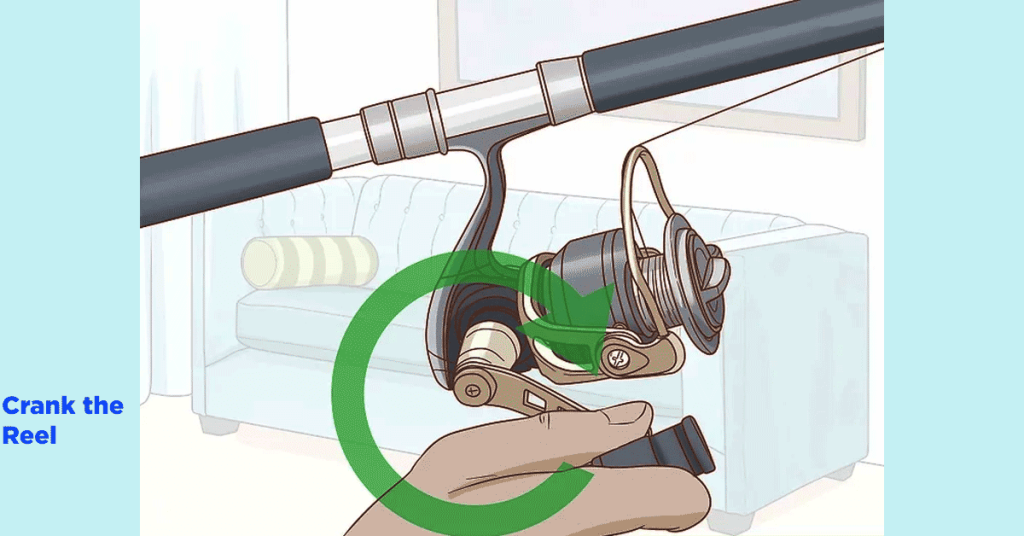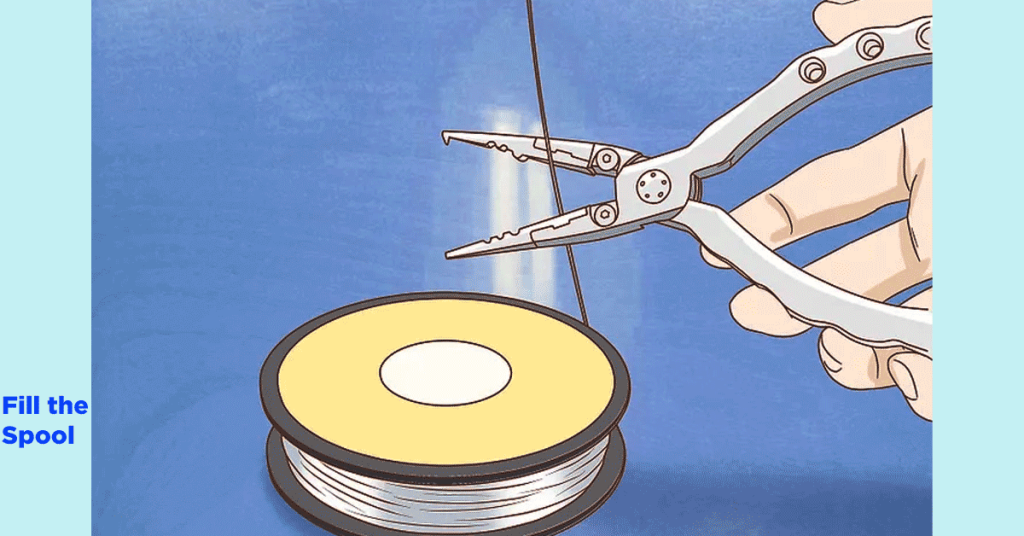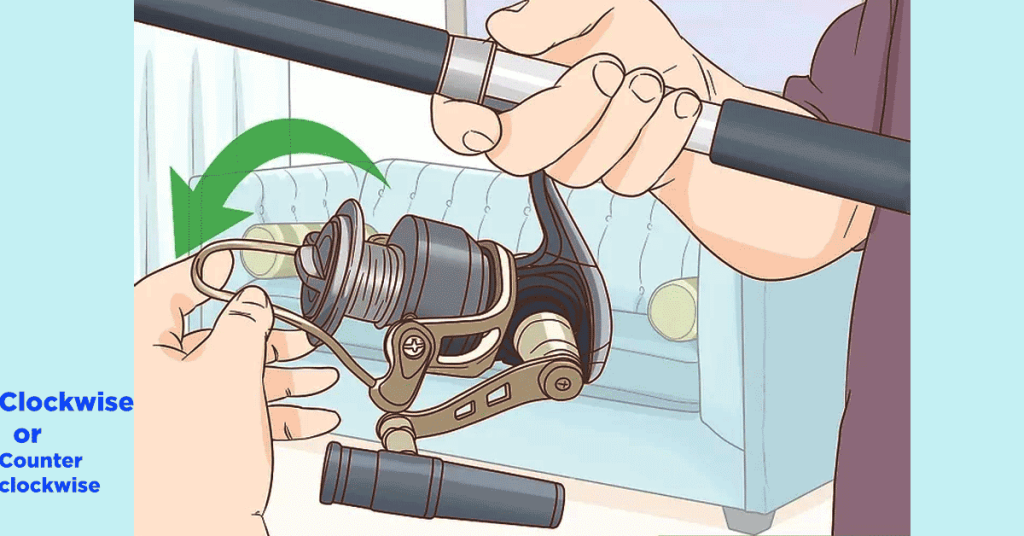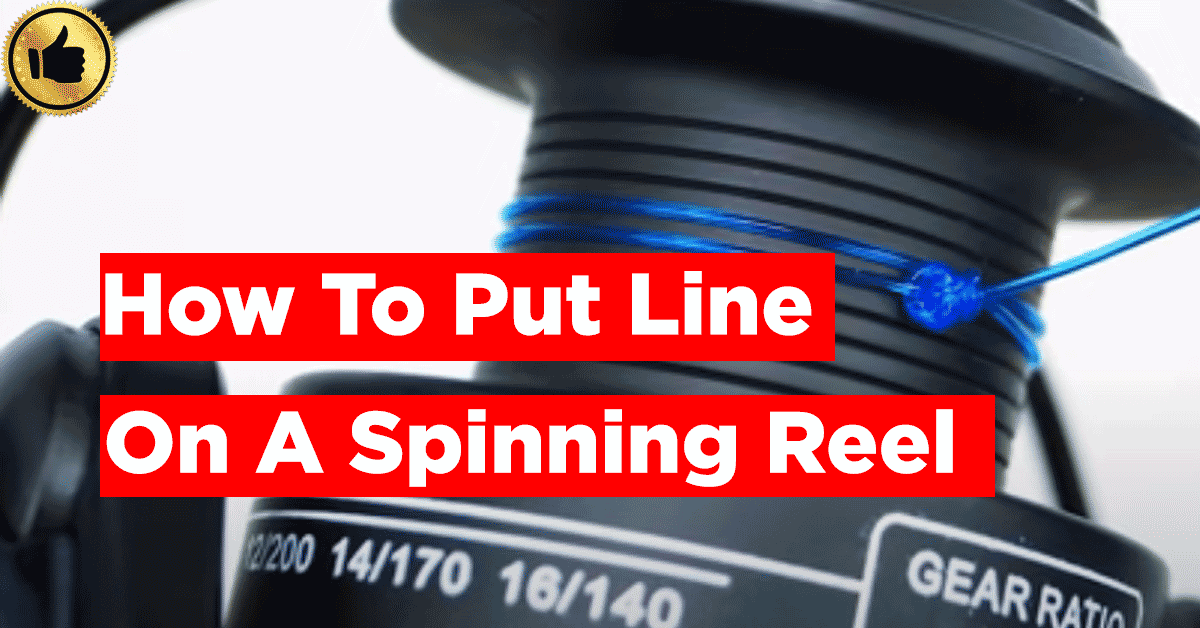How To Put Line On A Spinning Reel: A Step-by-Step Guide
Anglers must understand how to put line on a spinning reel when fishing. It is critical to learn how to spin the reel correctly to avoid a day-ending twist in the spin. Before going fishing, I think everyone should read these instructions and tips.
A perfectly spinning reel (Spooled) increases your chances of landing a big one on the water. In contrast, an improperly spooled spinning reel with twists and strands will almost always leave you empty-handed. So every angler must know how to spool a spinning reel.

Whether the reel rotates clockwise or counterclockwise:
Whether the reel rotates clockwise or counterclockwise. The simplest way to accomplish this is to grip the reel in the same sense as if you are fishing. Rotate the wheel at least a couple of times to check whether the reel spins clockwise or counterclockwise. In contrast, the line in the opposite way peels off the spool during casting.
Fishing Lines in different types of water:
The effectiveness of fishing lines in different water situations varies. Lines designed for fishing flathead and sauger, for one, are extremely well-suited to fresh water due to their meager sink rate and adjustability. Oversized, lipless hooks are great for fishing for bass and trout in saltwater as they impart a tremendous shock to the fish, holding it hooked before you get to the bank or boat.
So, which fishing line should I use for this technique? The answer to this question is based upon the type you aim to catch and indeed the situations in which you plan to do so. Let’s keep on reading for some proposed lines with tips on planning for any trip.
Use Fluorocarbon lines in calm and quiet water
These lines work well because they are less or not more visible to fish. Like monofilament lines, these lines can also have a little stretch and can withstand abrasion better. This line also responds more strongly to deep and gentle bites. These lines also work well as monofilament lines.
Use Monofilament Lines in floating water
Monofilament lines are more suitable and handier for live or floating baits and jigs. These lines have a high stretch ratio, can put a lot of stretches and can allow the hook to remain secure in the fish’s mouth during a bait.
Use Braided Lines:
Braided lines work well with upper water baits and are not good for deep water as it dip gradually.
Many lengths in braided line material are used to form a single braided line. These are used for making longer casting and less stretch with a significant breaking strength. As the line is viewable and sails well so use it with caution.
How to Put line on a Spinning reel
&
How can you spool a spinning reel to eliminate line twists?

Here are some steps that help you to understand how spool a spinning reel.
- Put the spool on the ground after closing the bail:
Lay the spool flat on the floor with the label facing up to ensure that the line enters the reel properly. Your spool should be aligned to exit the spool in the same direction it will enter the reel.
Flip the line over if it is twisted or does not fall into line once the spool is pointing directly. This will help prevent the line from becoming twisted.
2.Gently press the line and crank the spool gently.
Pull the line tight and lightly pinch it about 30 cm or above the reel. Slowly wind the reel 20 times and let the line float via your clipped fingers.
In case of a twist, remove some of it from your reel and readjust the spool.

3.Keep cranking the reel to stack the line.
You can continue lifting till to make sure that there is no twist. Continue to add the line slowly, actually preventing so each 20-30 cranks to examine twists.
In case of a twist, restart the process. Sort out it and proceed slowly.
4. Enter the spool up to 1/8 inches from the rim.
This will have to cut off a large section of line even as adjusting lures to prevent losing your reel because I provide you with many lines.

5. Cut the line nearby to the spool with cutters.
End up just enough line to secure the loose end with only a lure. After having cut the line, wrap a small tape around the free end of the spool to keep it from untwisting.
6.Fix the line to the spool.
To safeguard the loose end of your line, use a lure, or reel. The line will not slip through the guides as a result. Another option is to wrap a rubber across the spool.
Whether the reel rotates clockwise or counterclockwise:
The simplest way to accomplish this is to grip the reel in the same sense as if you are fishing. Rotate the wheel at least a couple of times to check whether the reel spins clockwise or counterclockwise. In contrast, the line in the opposite way peels off the spool during cast.
• Spinning reels, unlike baitcasting reels, are extended down from the rod rather than stay over it.
• To properly hold the reel while not placing it on the rod, wrap your casting hand’s fingers across the fastening and allow the reel to float from it.

Instructions for minimizing twist and spooling issues:
Here are some pointers to help you avoid problems while spooling.
- While most spinning reels allow you to narrow the bail by rotating the handle, practice manually closing it after each cast by holding it tight.
- Avoid the reel compared to the drag. If a fish is carrying the line and it’ll break, either soften your drag until it slips or back reel to evade breakage.
- Use a line conditioner to wipe down monofilaments and fluorocarbon lines. Spray it on your guides in sub-freezing temperatures.
- Switch lines in case of doubt. It’s a direct point of contact with the fish, so respool if twist limits your casting spacing or has broken strength.
For more Fishing Gears Visit Fishinggain.






